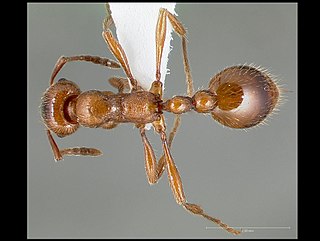
Manica hunteri is a species of ant in the family Formicidae.
Ectemnius arcuatus is a species of square-headed wasp in the family Crabronidae. It is found in North America.

Coelioxys banksi is a species of leafcutter bees in the family Megachilidae. It is a parasite of Megachile relativa nests.
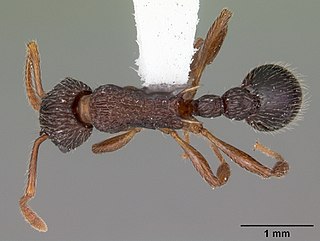
Myrmica punctiventris is a species of ant in the family Formicidae.

Chortophaga viridifasciata, the green-striped grasshopper, is a species of band-winged grasshopper in the family Acrididae. It is found in Central America and North America, ranging from British Columbia to the Gulf of Mexico, south to Costa Rica.
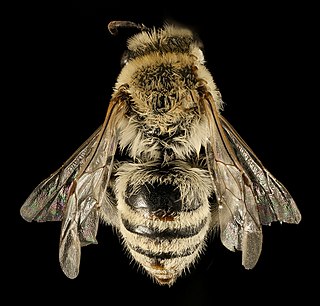
Colletes phaceliae is a species of hymenopteran in the family Colletidae. It is found in North America.

Pogonomyrmex anzensis, the Anza desert harvester, is a species of ant in the family Formicidae.
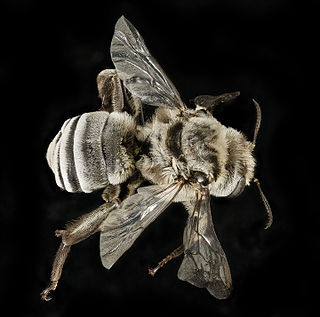
Melitoma taurea, the mallow bee, is a species of chimney bee in the family Apidae. It is found in North America.

Melitoma is a genus of chimney bees in the family Apidae. There are about 13 described species in Melitoma. Found in the Nearctic and Neotropics.

Eubazus is a genus of braconid wasps in the family Braconidae. There are at least 140 described species in Eubazus.

Gonatocerus is a genus of fairyflies in the family Mymaridae. There are at least 260 described species in Gonatocerus.

Lissonota is a genus of ichneumon wasps in the family Ichneumonidae. There are at least 390 described species in Lissonota.

Melissodes bimaculatus, the two-spotted longhorn, is a species of long-horned bee in the family Apidae.
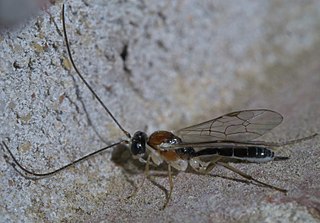
Mesochorus is a genus of ichneumon wasps in the family Ichneumonidae. There are at least 690 described species in Mesochorus.

Ormyrus is a genus of chalcid wasps in the family Ormyridae. There are at least 120 described species in Ormyrus.

Phanerotoma is a genus of braconid wasps in the family Braconidae. There are at least 190 described species in Phanerotoma.

Pteromalus is a genus of pteromalids in the family Pteromalidae. There are at least 430 described species in Pteromalus.

Rhyssinae is a subfamily of parasitoid wasps in the family Ichneumonidae. It contains eight genera and 259 described species, but there are likely many undiscovered species.

Rogas is a genus of braconid wasps in the family Braconidae. There are at least 100 described species in Rogas.

Xorides is a genus of ichneumon wasps in the family Ichneumonidae. There are at least 150 described species in Xorides.


















